Content Menu
● Understanding Baby Swimwear Needs by Age
>> 0-3 Months
>> 3-6 Months
>> 6-12 Months
>> 12 Months and Older
● Key Features to Look For in Baby Swimwear
>> 1. Material
>> 2. Sun Protection
>> 3. Fit
● Popular Baby Swimwear Options
>> 1. Happy Nappy Wetsuit
>> 2. RuffleButts Swimsuits
>> 3. Splash About Baby Wrap Wetsuit
>> 4. Gerber Childrenswear Swim Rash Guards
>> 5. Old Navy Rash Guard Set
● Accessories That Enhance Swimming Experience
>> 1. Swim Caps
>> 2. Water Shoes
>> 3. Floatation Devices
>> 4. Sunscreen
● Safety Tips While Swimming with Babies
● Tips for Choosing Baby Swimwear
● FAQs about Baby Swimwear
>> 1. What type of swim diaper should I use?
>> 2. How do I know if my baby's swimsuit fits properly?
>> 3. Can I use regular sunscreen on my baby?
>> 4. How often should I change my baby's swim diaper?
>> 5. Are there specific materials I should avoid?
● Conclusion
● Citations:
Choosing the right swimwear for babies is essential for ensuring their comfort, safety, and enjoyment while swimming. With a variety of options available, it can be overwhelming for parents to determine which swimwear best suits their little ones. This guide will explore the best types of swimwear for babies, considering factors such as age, material, fit, sun protection, and additional accessories that enhance the swimming experience.
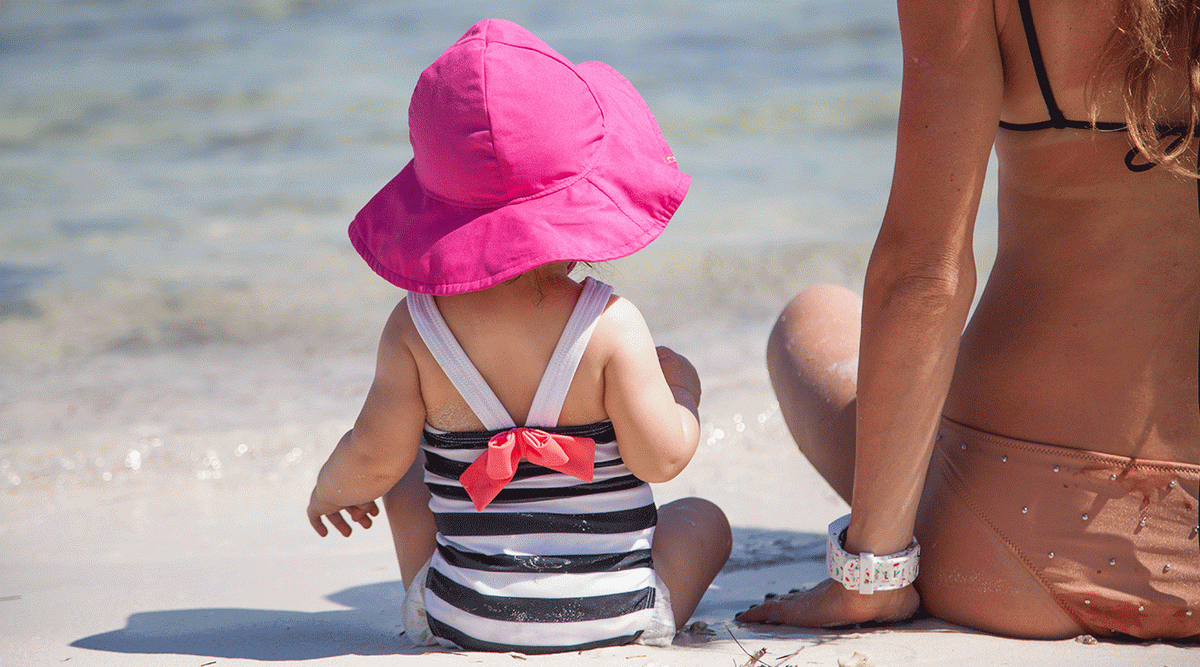
Understanding Baby Swimwear Needs by Age
Swimwear needs can vary significantly as babies grow. Here's a breakdown of what to consider at different ages:
0-3 Months
For newborns and very young infants, swimwear should prioritize warmth and comfort. Here are key features to look for:
- Material: Opt for neoprene wetsuits that provide insulation and warmth in cooler water.
- Design: Baby wraps are ideal as they open flat for easy dressing and changing. They also provide good coverage to keep the baby warm.
- Sun Protection: Look for suits with UPF (Ultraviolet Protection Factor) ratings to shield delicate skin from harmful UV rays.
3-6 Months
As babies become more active, their swimwear should accommodate increased movement while still providing warmth.
- Fit: Ensure a snug fit without being too tight. Swimwear should not restrict movement but should stay in place during play.
- Ease of Diaper Changes: Choose designs that allow for quick diaper changes, such as those with snaps or zippers.
6-12 Months
At this stage, babies are often introduced to swimming classes and spend more time in the water.
- Leak Protection: Swimwear with built-in swim diapers is essential to prevent leaks during longer swimming sessions.
- Buoyancy Aids: Consider float suits or jackets that help support babies in the water while encouraging natural swimming positions.
12 Months and Older
Once babies reach one year, they may begin to explore swimming independently.
- Variety of Styles: Options like rash guards, swim trunks, or one-piece suits become popular as toddlers engage more actively in water play.
- UV Protection: Long-sleeve swimsuits provide additional coverage against the sun and prevent sunburns.
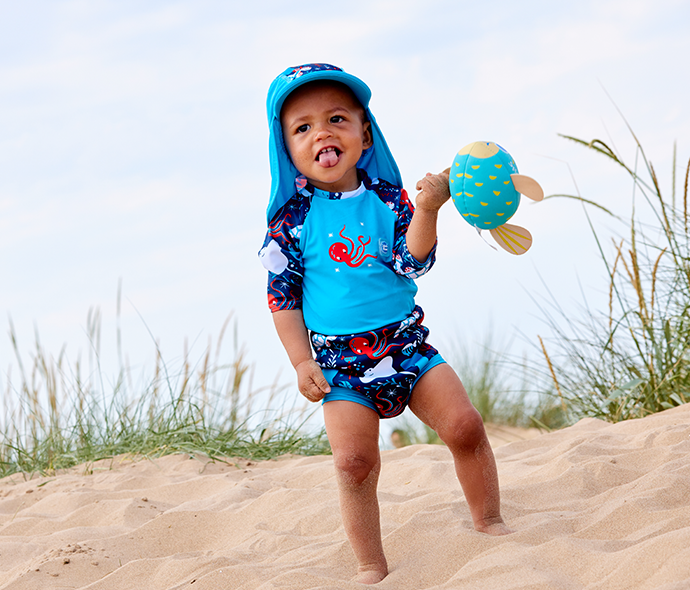
Key Features to Look For in Baby Swimwear
When selecting swimwear for your baby, consider the following features:
1. Material
The fabric of the swimwear is crucial for comfort and safety:
- Softness: Look for materials that are gentle against a baby's sensitive skin. Avoid itchy tags or seams that could cause irritation.
- Breathability: Lightweight and breathable fabrics help regulate body temperature while keeping the baby comfortable.
- Durability: High-quality materials resist fading and wear from chlorine or saltwater exposure.
2. Sun Protection
Protecting your baby's skin from UV rays is essential:
- UPF Ratings: Choose swimwear with UPF 50+ ratings to block out 98% of harmful rays. This is especially important during outdoor activities.
- Coverage: Long-sleeve swimsuits or those with hats provide better overall protection than traditional swimsuits.
3. Fit
A proper fit ensures safety and comfort:
- Snug Fit: Swimwear should fit snugly but not restrict movement. Ill-fitting suits can become heavy when wet or shift around during play.
- Adjustable Features: Look for adjustable straps or waistbands that can accommodate growth spurts.
Popular Baby Swimwear Options
Here are some of the best-rated swimwear options currently available:
1. Happy Nappy Wetsuit
This wetsuit features an integrated swim diaper, making it a convenient choice for parents. It is made from neoprene, providing warmth and comfort in cooler waters while offering UPF 50+ sun protection.
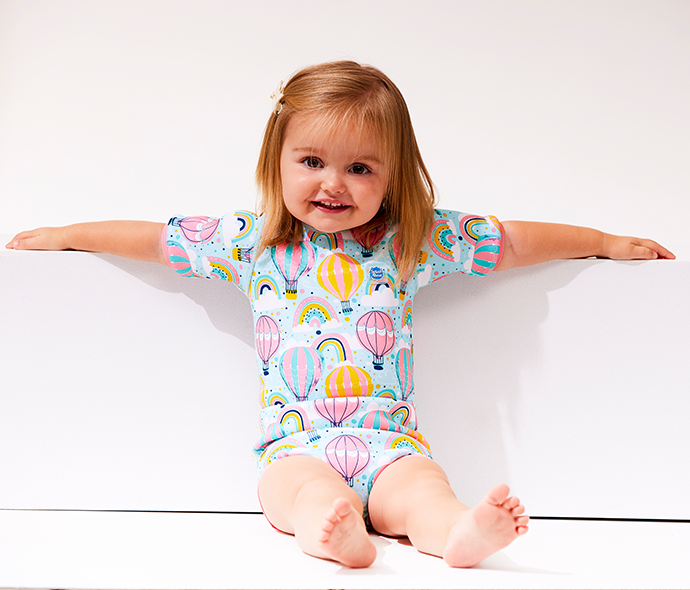
2. RuffleButts Swimsuits
Known for their adorable designs, RuffleButts offers swimsuits with UPF 50+ protection. They feature long sleeves and are designed for easy on-and-off access with back zippers and snap closures for diaper changes.
3. Splash About Baby Wrap Wetsuit
This wrap-style wetsuit is easy to put on and take off, making it ideal for busy parents. It provides warmth with its neoprene material and has a snug fit that prevents slipping in the water.
4. Gerber Childrenswear Swim Rash Guards
These rash guards come in various fun prints and offer UPF 50+ protection. They are lightweight and designed to be worn over swim diapers or trunks.
5. Old Navy Rash Guard Set
This budget-friendly option features long sleeves and a front zipper for easy dressing. The material is durable enough to withstand regular use while providing excellent sun protection.
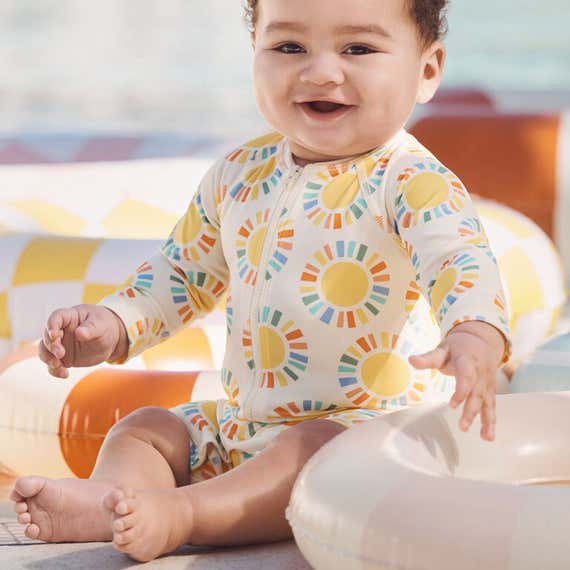
Accessories That Enhance Swimming Experience
In addition to choosing the right swimwear, several accessories can enhance your baby's swimming experience:
1. Swim Caps
Swim caps help keep hair dry and reduce drag in the water. They also protect delicate heads from cold water temperatures. Look for soft silicone caps designed specifically for infants that are easy to put on and take off without causing discomfort.
2. Water Shoes
Water shoes provide traction on slippery surfaces around pools or beaches while protecting little feet from hot sand or sharp objects. Choose lightweight shoes made from breathable materials that dry quickly after getting wet.
3. Floatation Devices
While not a substitute for parental supervision, floatation devices like arm bands or inflatable rings can help babies feel more secure in the water as they learn to paddle around. Ensure these devices are age-appropriate and meet safety standards.
4. Sunscreen
Even with protective clothing, applying sunscreen is crucial when spending time outdoors. Use a broad-spectrum sunscreen with at least SPF 30 designed specifically for babies' sensitive skin. Reapply every two hours or more frequently if your baby is splashing around in the water.
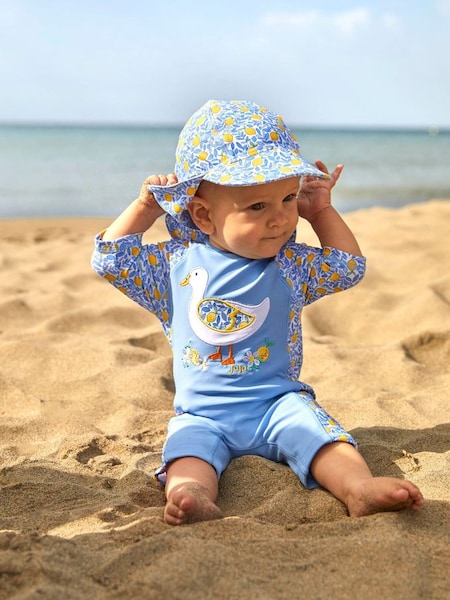
Safety Tips While Swimming with Babies
Safety should always be a top priority when introducing your baby to water activities:
- Supervision: Never leave your baby unattended near water, even if they are wearing floatation devices or swim gear.
- Start Slow: Introduce your baby to water gradually; allow them to acclimate at their own pace.
- Watch Water Temperature: Ensure the water temperature is comfortable—ideally between 85°F (29°C) and 87°F (31°C) for infants.
- Know Your Limits: Be aware of your baby's mood; if they seem tired or overwhelmed, it's best to take a break from swimming.
Tips for Choosing Baby Swimwear
When shopping for baby swimwear, keep these tips in mind:
- Check Size Charts: Sizes can vary between brands; always refer to size charts before purchasing.
- Consider Growth: Some parents opt to buy a size up to accommodate growth but ensure the suit is not too loose.
- Read Reviews: Other parents' experiences can provide insight into durability and fit.
FAQs about Baby Swimwear
1. What type of swim diaper should I use?
- Look for reusable swim diapers that are comfortable and effective at preventing leaks while allowing freedom of movement.
2. How do I know if my baby's swimsuit fits properly?
- The swimsuit should feel snug without restricting movement; check that it doesn't sag when wet or ride up uncomfortably.
3. Can I use regular sunscreen on my baby?
- For babies under six months, it's best to avoid sunscreen on large areas of skin; instead, opt for protective clothing and seek shade whenever possible.
4. How often should I change my baby's swim diaper?
- Change your baby's swim diaper regularly—ideally after every swim session or whenever you notice they need it—especially if they have been in the pool for an extended period.
5. Are there specific materials I should avoid?
- Avoid rough fabrics or those containing harmful chemicals; prioritize hypoallergenic options that are gentle on sensitive skin.
Conclusion
Choosing the best swimwear for babies involves understanding their unique needs based on age, activity level, and environmental factors like temperature and sunlight exposure. By selecting high-quality materials with appropriate sun protection features, parents can ensure their little ones enjoy safe and comfortable water experiences while fostering a love of swimming from an early age.
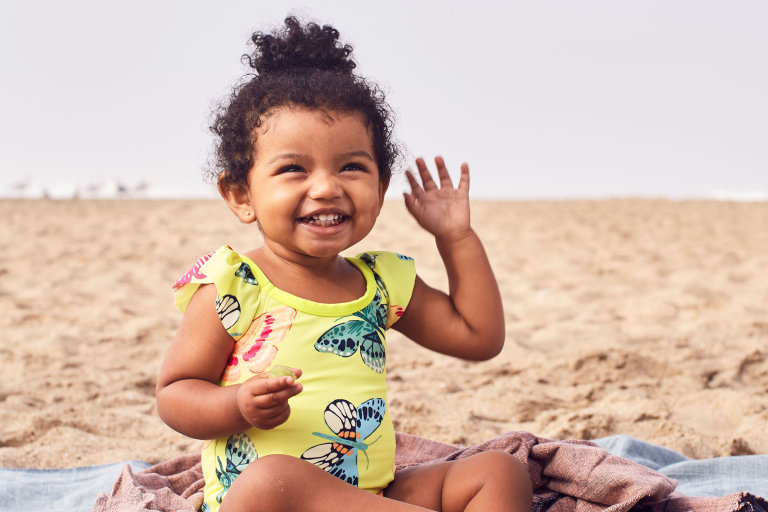
Citations:
[1] https://www.splashabout.com/helpcentre/where-start-size-help/baby-swimwear-essentials
[2] https://www.thebump.com/a/best-baby-swimsuits
[3] https://www.gerberchildrenswear.com/collections/swimwear
[4] https://www.istockphoto.com/photos/baby-swimwear
[5] https://www.wearesandbar.com/blogs/news/3-things-to-look-out-for-when-buying-baby-swimwear-in-singapore
[6] https://www.gerberchildrenswear.com/blogs/news/the-ultimate-guide-to-baby-swimwear
[7] https://purebaby.com.au/blogs/journal/how-to-choose-swimwear-for-baby
[8] https://www.motherandbaby.com/reviews/first-year-products/best-baby-swimsuits-wetsuits/
[9] https://shop.waterbabies.co.uk/blogs/baby-swimwear/baby-wetsuits







































